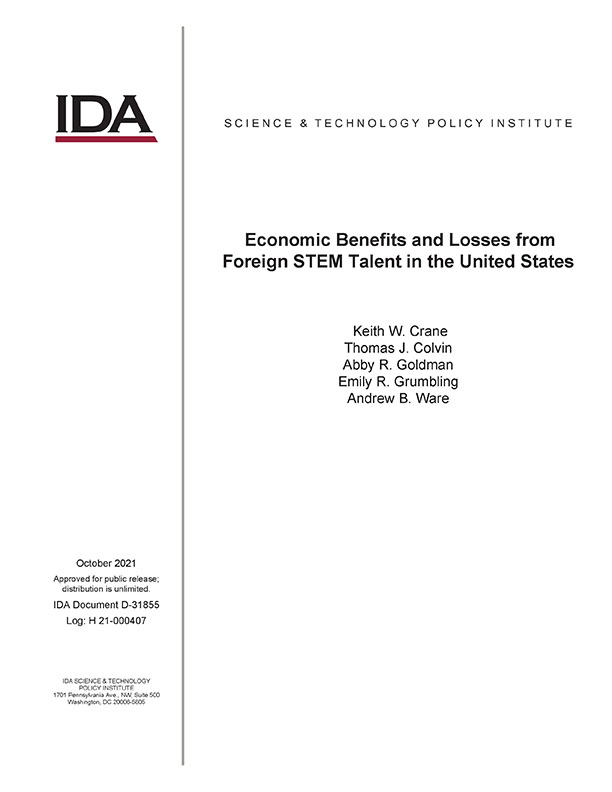This paper provides quantitative estimates of the economic benefits and costs to the United States of foreign STEM talent who visit, study or work in this country. It is designed to assist in the formulation of effective policies to reduce economic losses associated with the misappropriation of U.S. trade secrets to competitor countries, in particular China, while preserving the benefits of foreign STEM talent to the United States. The study finds that the United States gains substantial economic benefits from foreign STEM talent in this country. In 2019, in aggregate, the foreign-born STEM workforce contributed $367 billion to $409 billion in labor value-added, 1.7 to 1.9 percent of U.S. GDP. Foreign-born entrepreneurs have helped found U.S. companies in R&D-intensive industries; the value-added from these companies is estimated to range from $260 billion to $394 billion, or 1.2 to 1.8 percent of GDP. The primary economic costs to the United States from foreign STEM talent are misappropriation of trade secrets and the transfer of intangible technologies as foreign-born individuals who have worked or studied in the United States return to their home countries and use that knowledge to contribute to the development of new industries that compete with U.S. industries. On a net basis, foreign-born STEM workers are economically beneficial to the United States: net benefits range run from $200,000 to $700,000 per individual over a three-year period on a net basis. Post-doctoral fellows, visiting researchers, and graduating PhD students also benefit the United States economically on net basis.

